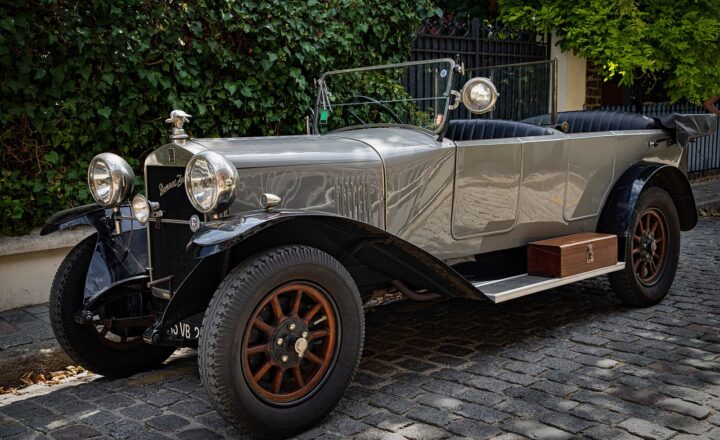The Datsun 240Z: Japan’s Affordable Sports Car That Took on the World
November 13, 2024

The Datsun 240Z, launched in 1969, is not just a car; it’s a symbol of a revolutionary era in the automotive industry. This remarkable vehicle catapulted Japanese engineering onto the global stage, challenging the dominance of European sports cars with its remarkable combination of performance, affordability, and design. In this article, we will explore the history, design, performance, and lasting legacy of the Datsun 240Z.
1. A Brief History of the Datsun 240Z
The Datsun 240Z was produced by Nissan and was part of a series of vehicles that aimed to compete in the sports car market. Prior to the 240Z, most affordable sports cars were designed and manufactured in Europe, leaving enthusiasts seeking both performance and affordability at a loss. Nissan recognized this gap and sought to fulfill it by creating a vehicle that was not only economical but also fun to drive.
The 240Z debuted at the 1969 New York Auto Show and was met with rave reviews. It caught the attention of auto enthusiasts and critics alike, quickly establishing itself as a game changer in the competitive sports car market. The car’s sleek design, powerful engine, and reasonable price point revolutionized what consumers could expect from a sports car.
2. Design and Features
The design of the Datsun 240Z was inspired by a blend of influences. Its long hood, short rear deck, and overall sleek styling were reminiscent of European sports cars, particularly those from Ferrari and Porsche. The 240Z also featured a lightweight body, allowing for better handling and performance.
Key Design Features:
- Sleek Body: The 240Z had a distinctive silhouette that appealed to sports car lovers, with a design that effortlessly blended art and functionality.
- Interior Comfort: The cabin was designed to be spacious and comfortable, equipped with bucket seats that held the driver firmly in place during spirited driving.
- Lightweight Materials: Nissan utilized lightweight materials, making the car agile and enhancing its performance capabilities.
In addition to its good looks, the 240Z included features that promoted a spirited driving experience, such as a four-speed manual transmission and the option of a three-speed automatic. This combination of style and performance appealed to a broad audience, contributing significantly to its popularity.
3. Performance Specifications
Under the hood, the 240Z packed a powerful punch. It was powered by a 2.4-liter inline-six engine that produced approximately 151 horsepower. This engine, paired with rear-wheel drive and a well-balanced chassis, allowed the car to accelerate from 0 to 60 mph in just over eight seconds – an impressive feat for its time.
Key Performance Specifications:
- Engine: 2.4-liter inline-six, producing 151 hp
- Transmission: 4-speed manual or 3-speed automatic
- Top Speed: 125 mph (201 km/h)
- 0-60 mph: ~8 seconds
The lightweight construction and well-tuned suspension contributed to fantastic handling characteristics, making the 240Z a favorite on both the street and the race track. Its impressive power-to-weight ratio set it apart from competitors and established it as a formidable sports car on the world stage.
4. Competing on the Global Stage
As the Datsun 240Z gained traction in the market, it entered various racing competitions, demonstrating its capabilities. It won numerous accolades in events such as the SCCA (Sports Car Club of America) and the International Motor Sports Association races. These accomplishments solidified the 240Z’s reputation as a serious contender in the motorsport arena, further elevating its status.
Notable Racing Achievements:
- First in Class at the 1970 and 1971 SCCA Championships. The car’s performance on the track showcased its engineering excellence.
- Success in endurance racing, including the 24 Hours of Daytona. The 240Z competed fiercely against established brands, proving Japanese engineering was here to stay.
These racing successes not only fueled interest among consumers but also caught the attention of automotive journalists and industry insiders. Nissan’s commitment to racing enhanced its credibility and strengthened its image as a manufacturer of high-performance vehicles.
5. Lasting Legacy and Cultural Impact
The Datsun 240Z left an indelible mark on automotive history. It has become an iconic representation of the 1970s sports car movement. Its affordability, coupled with its performance, made it accessible to a larger audience, proving that a sports car didn’t need to come with a hefty price tag.
Today, the 240Z enjoys a robust enthusiast community that appreciates its distinct combination of style, performance, and significance in automotive history. The car remains a favorite among collectors and restorers and has achieved cult status in pop culture.
Cultural Impact:
- Film and Television: The 240Z has been featured in numerous films and television shows, cementing its status as a classic car.
- Automotive Events: Enthusiast clubs hold events and gatherings to celebrate the model, showcasing restored and modified versions across the globe.
The Datsun 240Z’s legacy continues to inspire car enthusiasts and manufacturers alike, proving that innovation can disrupt the status quo and create iconic vehicles that endure through time.
Conclusion
The Datsun 240Z is more than just a vehicle; it’s a milestone in the evolution of affordable sports cars. Through its remarkable combination of design, performance, and legacy, the 240Z not only changed the game for Japanese automakers but also made sports cars accessible to enthusiasts worldwide. Its influence is palpable even today, reminding us that sometimes the underdog can rise to challenge the giants and emerge victorious.
Whether for its stunning looks or its racing pedigree, the Datsun 240Z holds a special spot in automotive history as a pioneering force that paved the way for future generations of sports cars.








